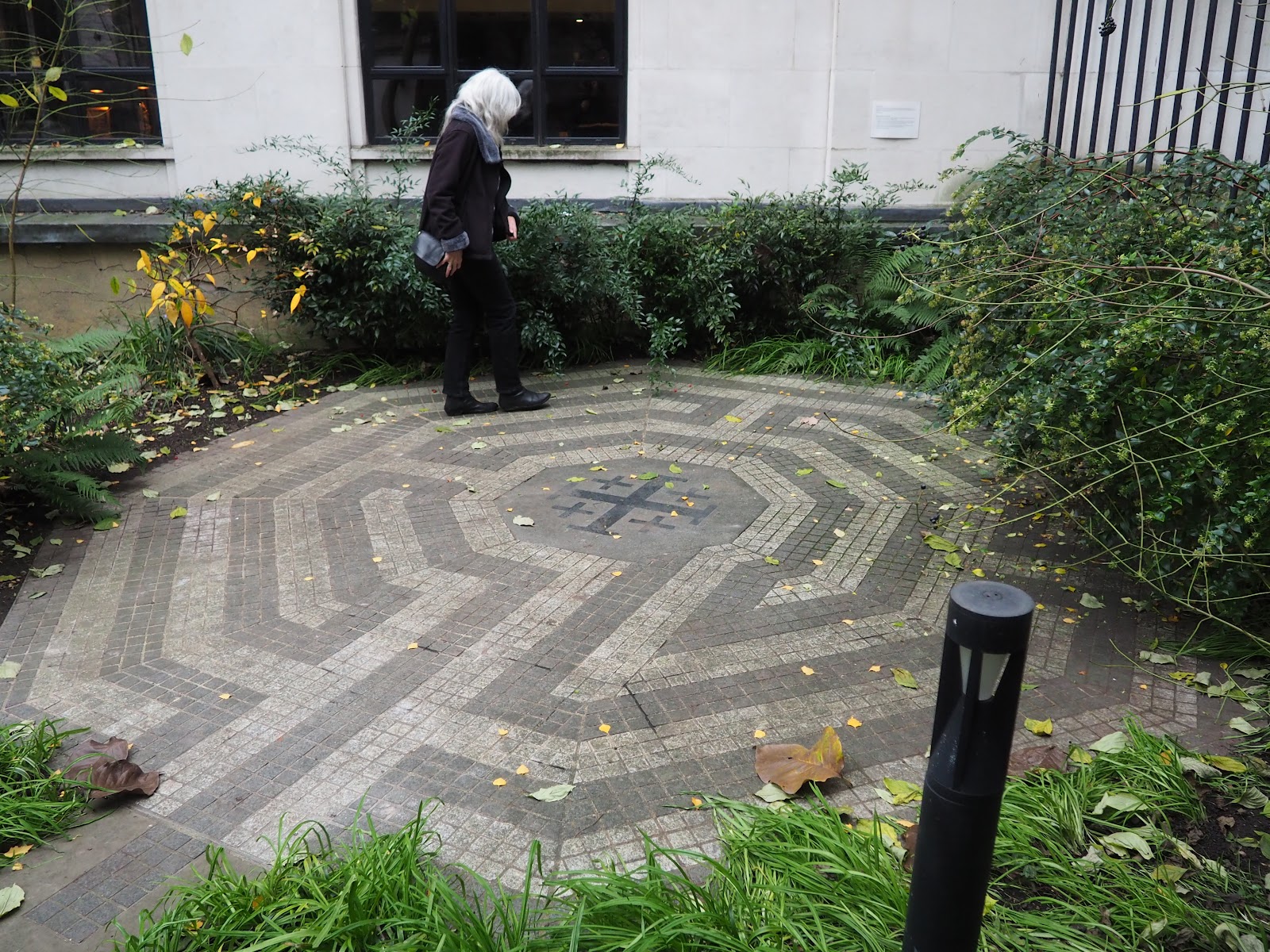Finding myself near the Tower of London, I decided to walk to (and in) Seething Lane Garden, a place I knew a little about but had never been to.
Chiefly what I knew was that Samuel Pepys had once had a house there, in the Navy Office, his place of work. Both house and office are long gone, and Seething Lane Garden, is a sliver of land tucked in beside the Four Seasons Hotel, what used to be the headquarters of Port of London of Authority.
The garden is far too small for a ‘serious’ walk: by some accounts it’s a ‘pocket park,’ which only adds to my confusion about the difference between parks and gardens, but a walk doesn’t always have to be serious.
On the day of my visit the garden was wintry and windswept, which was only to be expected in December. Presiding over it is a very fine bust of Pepys, created by Karin Jonzen and put up by the Samuel Pepys Club in 1983.
On the ground are some even finer paving slabs showing a map,
a plague doctor,
among others, but best of all is a parmesan cheese, like the one Pepys buried in his garden to save it from the Great Fire of London.
I suppose the pavers are there be walked on but I and the few other people I saw in the garden seemed to take pains to avoid them as though they were too precious for tramping feet. The pavers were made by past and present students of City & Guilds London Art School under the direction of Alan Lamb of Swan Farm Studios Ltd.
I was pleased to have walked in the Seething Lane Garden but it didn’t take long and isn’t one of the great London walks. Rather more fun can be had in and around St Olave’s church just across the road, though the address is Hart Street rather than Seething Lane, and best known (to me, anyway), for its skull-festooned gateway.
Dickens liked it too apparently. The churchyard and the garden were again wintry but there was a labyrinth – some walkers do enjoy a labyrinth:
Inside the church there are memorial busts of both Sam Pepys and his wife Elizabeth; their bodies are buried in the vault, away from prying eyes.But you know, the thing that really delighted me, the small thing that made the day for me, was a piece of stained glass in the church – showing teasels. Nature it gets everywhere
In fact, as I soon found out, the teasel is a symbol of the Worshipful Company of Clothworkers, of which Samuel Pepys was Master, but I’d have been perfectly happy for it to remain an enigma.
Pepys himself was, of course, a great walker. The word walk and its derivatives appears 1068 times in the Diary. There’s a really good book by Jacky Colliss Harvey titled Walking Pepys’s London. I recommend it, though your feet will get tired.


























